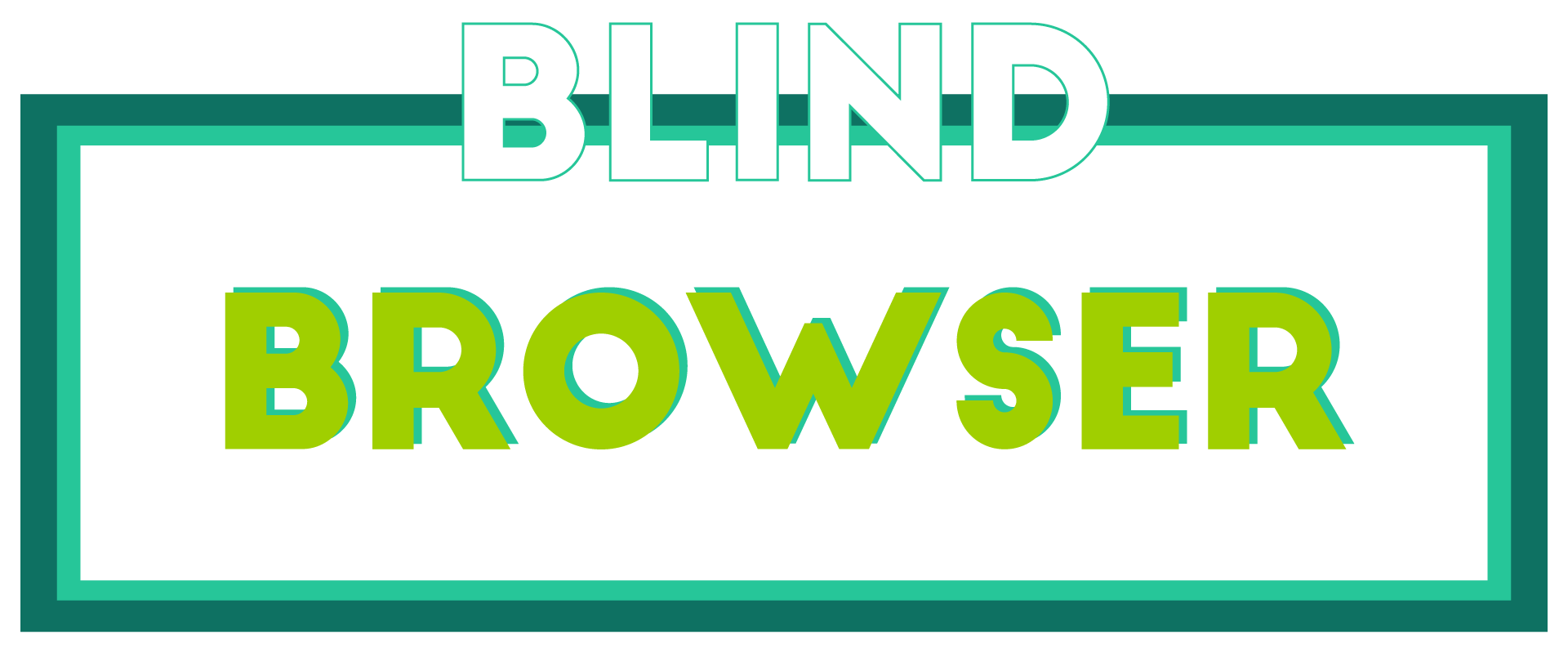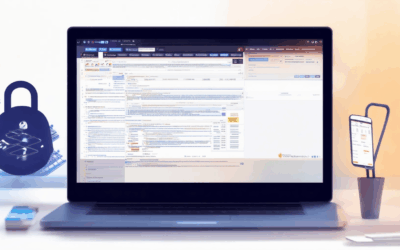In today’s digital age, data privacy has emerged as a critical concern for businesses and organizations across industries. As cyber threats evolve and regulatory requirements tighten, the need for robust data privacy solutions becomes increasingly urgent. Whether you’re managing a small business or overseeing a large corporation, protecting sensitive information is no longer optional—it’s essential for compliance, trust, and operational continuity. This comprehensive guide dives into the latest advancements in data privacy solutions, exploring what works best for different types of businesses and organizations. From understanding the key features of effective solutions to learning about emerging trends in data privacy management, this article equips you with the knowledge needed to safeguard your organization’s most precious asset—its data.
Key Takeaways
– Encryption: Secure data with methods like AES and RSA to protect it at rest and in transit.
– Access Control: Implement MFA, RBAC, and regular audits to restrict data access.
– Compliance Software: Use tools to automate compliance with GDPR, CCPA, and other regulations.
– Data Masking: Apply techniques like tokenization to hide sensitive information.
– Secure Cloud Storage: Store data in encrypted, compliant cloud environments.
– Third-Party Risk Management: Assess vendors with data processing agreements and audits.
– Employee Education: Train staff on data handling and phishing prevention.
– Effective Data Privacy Features: Include encryption, access control, compliance, and regular updates.
– Corporate Data Protection: Use encryption, restricted access, MFA, data minimization, and transparency.
– BlindBrowser Resources: Leverage their tools and guides for enhanced data privacy practices.

Best Data Privacy Solutions for Businesses
Data privacy has become a critical concern for businesses in today’s digital age. Protecting sensitive information, complying with regulations, and safeguarding customer trust are essential for operational success. Here are some of the most effective data privacy solutions available:
1. Encryption
Encryption is a fundamental pillar of data privacy. By converting data into a coded format, businesses can ensure that only authorized individuals can access it. Common encryption methods include:
- Symmetric Encryption: Uses the same key for encryption and decryption, such as AES and RSA.
- Asymmetric Encryption: Utilizes public and private keys for encryption and decryption, respectively.
Implementing encryption tools like BitLocker for Windows or FileVault for macOS can significantly enhance data security.
2. Access Control
Restricting who can access sensitive data is crucial. Implement multi-layered access controls, including:
- Role-Based Access Control (RBAC): Grants access based on job roles and responsibilities.
- Multi-Factor Authentication (MFA): Adds an extra layer of security beyond passwords.
- Least Privilege Principle: Ensures users only access what they need to perform their jobs.
Tools like Okta and CrowdStrike offer advanced access management solutions.
3. Data Monitoring and Logging
Continuous monitoring of data access and activities helps identify potential breaches early. Implement systems that track:
- Security Information and Event Management (SIEM): Combines logs from IT systems for comprehensive oversight.
- Data Loss Prevention (DLP) Tools: Detects and blocks unauthorized data transfers.
- Log Analysis: Reviews logs for suspicious activities indicative of data misuse.
Examples include IBM Watson and Splunk .
4. Compliance and Auditing
Meeting regulatory requirements and conducting internal audits ensures organizations remain compliant. Key standards include:
- General Data Protection Regulation (GDPR): Affects European Union citizens and requires strict data protection measures.
- California Consumer Privacy Act (CCPA): Provides stronger protections for California residents.
- HIPAA (Health Insurance Portability and Accountability Act): Applies to healthcare providers and insurers.
Regular audits using tools like HashiCorp Vault can help maintain compliance.
5. Employee Training and Awareness
Human error remains one of the leading causes of data breaches. Comprehensive training programs can mitigate risks by:
- Educating employees on data handling practices.
- Providing regular cybersecurity awareness programs.
- Certifying staff on data privacy standards.
Platforms like LastPass offer resources to enhance password security and awareness.
6. Managed Data Privacy Services
For businesses lacking in-house expertise, managed services can provide end-to-end solutions, including:
- Cloud Data Protection: Secures data stored in cloud environments.
- Third-Party Audit Assistance: Helps verify compliance with standards like GDPR and CCPA.
- Digital Forensics and Incident Response: Investigates and mitigates data breaches.
Companies like CrowdStrike and Mandiant specialize in these services.
By implementing these solutions, businesses can build robust data privacy frameworks that protect sensitive information, comply with regulations, and foster customer trust. Regularly reviewing and updating these strategies ensures ongoing compliance and security.
What Are the Best Data Privacy Solutions for Organizations?
Organizations must implement robust data privacy solutions to protect sensitive information and comply with regulations. Here are the top solutions:
- Data Encryption: Secure sensitive data through encryption technologies such as AES (Advanced Encryption Standard) and SSL/TLS (Secure Sockets Layer/Transport Layer Security). Encrypt data at rest and in transit to prevent unauthorized access.
- Access Control: Limit access to sensitive data using multi-factor authentication, role-based access control, and identity management systems. Ensure only authorized personnel can view or modify restricted information.
- Compliance Tools: Utilize automated tools to manage compliance with data protection laws like GDPR, CCPA, and HIPAA. These tools help identify gaps in your data handling processes and ensure adherence to regulatory standards.
- Data Monitoring and Logging: Implement continuous monitoring and logging solutions to detect and respond to potential breaches. Logs help track activities and identify suspicious behavior, enabling timely intervention.
- Data Anonymization and Pseudonymization: Protect personal data by replacing identifiers with pseudonyms or removing sensitive information altogether. This reduces the risk of re-identification and enhances privacy.
- Breach Response and Incident Management: Develop plans to respond to data breaches swiftly. Use incident response kits and automated tools to mitigate damage and restore systems quickly.
- Employee Training and Awareness: Educate staff on data privacy best practices to minimize human error risks. Regular training programs and awareness campaigns can significantly reduce exposure to security threats.
For more resources and tools to enhance your organization’s data privacy efforts, visit BlindBrowser.com . Our platform provides comprehensive guides, tools, and strategies to stay ahead of cyber threats and protect your data effectively.

Best Data Privacy Solutions for Protecting Sensitive Corporate Data
Protecting sensitive corporate data requires a multi-layered approach combining advanced technologies, strict policies, and educated employees. Below are the top strategies and tools to safeguard your organization’s data:
1. Encryption
Encryption is the process of converting data into a coded format that can only be read by someone with the correct decryption key. Implementing strong encryption methods ensures that even if unauthorized individuals gain access to your systems, they cannot decipher or misuse your data. Key implementations include:
- Data at Rest Encryption: Encrypt data stored on physical devices or storage systems.
- Data in Transit Encryption: Secure data transmitted over networks through methods like SSL/TLS.
- Endpoint Encryption: Encrypt data on individual devices like laptops and smartphones.
2. Access Control
Limiting who can access sensitive data is crucial. Implement role-based access control (RBAC) to ensure only authorized personnel can view or modify critical information. Additional measures include:
- Multifactor Authentication (MFA): Adds an extra layer of security beyond a password.
- Privileged Access Management: Restrict access to sensitive systems and data to only those who need it.
- Session Monitoring: Track and record user activities for auditing and incident response.
3. Data Governance and Classification
Establishing clear data governance policies helps ensure that data is handled appropriately. Classify data based on its sensitivity level (e.g., public, confidential, internal-only) and apply corresponding security measures. Tools like data classification software can assist in organizing and securing your data.
4. Monitoring and Auditing
Continuous monitoring of your systems and data is essential to detect and respond to potential breaches. Implement logging mechanisms and regular audits to identify vulnerabilities and ensure compliance with regulatory requirements. Use tools like security auditing tools to evaluate your current protections.
5. Employee Education and Awareness
Human error is often the leading cause of data breaches. Train employees on best practices like phishing awareness and data handling procedures. Provide regular updates on cybersecurity threats and encourage a culture of security within your organization. Use resources from cybersecurity awareness platforms to educate your team.
6. Compliance with Regulations
Adhere to relevant data protection laws and standards such as GDPR, CCPA, and HIPAA. These regulations often require specific measures like data minimization (collecting only necessary data) and data retention policies. Stay informed about updates to these regulations and adjust your strategies accordingly.
7. Use of Third-Party Services
When working with external vendors or cloud providers, ensure they adhere to high standards of data security. Review their data protection policies and conduct regular security assessments before sharing sensitive information.
8. Incident Response Plan
Develop and regularly test an incident response plan to minimize damage in case of a breach. Include steps for reporting incidents, containing the breach, and communicating with stakeholders. Use frameworks like incident response templates to streamline the process.
By combining these strategies, organizations can significantly reduce the risk of data breaches and ensure the protection of sensitive corporate information. Regularly review and update your security measures to stay ahead of evolving threats.

Data Privacy Solutions for Businesses
Protecting sensitive business information is crucial in today’s digital age. Here are some leading data privacy solutions that can help organizations safeguard their data, comply with regulations, and maintain trust with customers.
- Encryption: Implement robust encryption methods to secure data at rest and in transit. This includes using HTTPS for web traffic, AES encryption for stored data, and RSA keys for sensitive communications.
- Access Control: Limit who can access critical data through multi-factor authentication, role-based access, and strict permissions policies. Regularly audit access rights to prevent unauthorized access.
- Compliance Software: Utilize tools that automate compliance with data protection laws like GDPR, CCPA, and HIPAA. These platforms help track data usage, manage consent, and ensure regulatory adherence.
- Data Masking: Hide sensitive information in databases and applications using techniques like tokenization or pseudonymization to protect personal details while allowing analysis.
- Secure Cloud Storage: Store data in encrypted and managed cloud environments that comply with industry standards. Choose providers with strong security protocols and regular audits.
- Third-Party Risk Management: Assess and mitigate risks when working with external vendors. Use data processing agreements and conduct regular audits to ensure partners handle data responsibly.
- Employee Education: Train staff on best practices for data handling, phishing prevention, and incident response. Create a culture of awareness and accountability within the organization.
For more resources on protecting your business data, visit BlindBrowser.com . Our platform offers guides, tools, and expert advice to help you stay ahead of cyber threats and maintain data integrity.
Key Features of Effective Data Privacy Solutions
Data privacy solutions are essential for safeguarding sensitive information and ensuring compliance with regulations. Here are the primary features that define effective data privacy solutions:
- Encryption : Protecting data through strong encryption methods ensures that only authorized individuals can access it. Advanced encryption techniques like AES (Advanced Encryption Standard) and RSA (Rivest-Shamir-Adleman) are commonly used to secure data at rest and in transit.
- Access Control Mechanisms : Restricting access to data based on roles and permissions minimizes the risk of unauthorized access. Multi-factor authentication (MFA), role-based access control (RBAC), and identity verification processes are critical components of robust access control systems.
- Compliance and Auditing : Effective data privacy solutions must adhere to relevant regulations such as GDPR, CCPA, HIPAA, and PCI-DSS. Regular audits and assessments ensure ongoing compliance and identify vulnerabilities before they can be exploited.
- Data Anonymization and Pseudonymization : Techniques like anonymization and pseudonymization reduce the risk of re-identification. These methods transform data so that personal identifiers are removed, making it harder for malicious actors to trace data back to individuals.
- Data Minimization : Collecting only the necessary amount of data reduces the surface area for potential breaches. Implementing data minimization practices ensures that organizations store and process the least amount of personal data possible.
- Incident Response and Breach Notification : A strong incident response plan is crucial for containing data breaches. Timely breach notifications and transparent communication with stakeholders help mitigate damage and maintain trust.
- Regular Updates and Patching : Continuous updates and patches for software and systems prevent known vulnerabilities from being exploited. Keeping systems up-to-date is a fundamental aspect of maintaining data security.
- Third-Party Management : Vendors and third-party service providers handling data must also comply with strict security protocols. Robust vendor management programs ensure that external partners uphold the same level of data protection as the organization itself.
BlindBrowser.com offers comprehensive resources and tools to help users understand and implement these features effectively. By leveraging advanced privacy tools and staying informed about the latest trends, individuals and organizations can enhance their data privacy measures significantly.

What Makes Data Privacy Solutions Effective for Safeguarding Sensitive Corporate Information?
Data privacy solutions are essential for protecting sensitive corporate information. Their effectiveness depends on several key factors:
- Encryption: Securely encrypting data ensures that it cannot be accessed by unauthorized parties. Modern solutions often use advanced encryption algorithms like AES and RSA to safeguard information.
- Restricted Access: Implementing strict access controls, such as role-based access policies, limits who can view or modify data. This is further supported by physical and environmental security measures to prevent unauthorized access.
- Multi-Factor Authentication (MFA): Adding layers of security through MFA reduces the risk of unauthorized access. This method requires users to provide two or more forms of verification before accessing sensitive data.
- Data Minimization: Collecting only the necessary data reduces the risk of exposing unnecessary information. Organizations should adopt practices that ensure data collection is purpose-specific and limited to what’s needed for a particular task.
- Compliance: Adhering to relevant data protection regulations, such as GDPR, CCPA, HIPAA, and PCI-DSS, ensures that solutions meet legal requirements and are regularly audited for compliance.
- Transparency: Being open about data practices builds trust with stakeholders. Clear communication about data usage, storage, and sharing policies fosters accountability and ensures alignment with organizational goals.
- Employee Training: Regular training programs help employees understand and implement best practices for data handling. This includes recognizing phishing attempts, securing devices, and following established protocols to prevent data breaches.
By combining these elements, organizations can create robust data privacy frameworks that effectively safeguard sensitive information. Solutions like those offered by BlindBrowser provide tools and resources to enhance these practices, ensuring that corporate data remains protected against evolving threats.
Conclusion: Effective data privacy solutions require a multifaceted approach that balances technology, policy, and education. Organizations must continuously adapt to stay ahead of potential risks and maintain the trust of their stakeholders.




